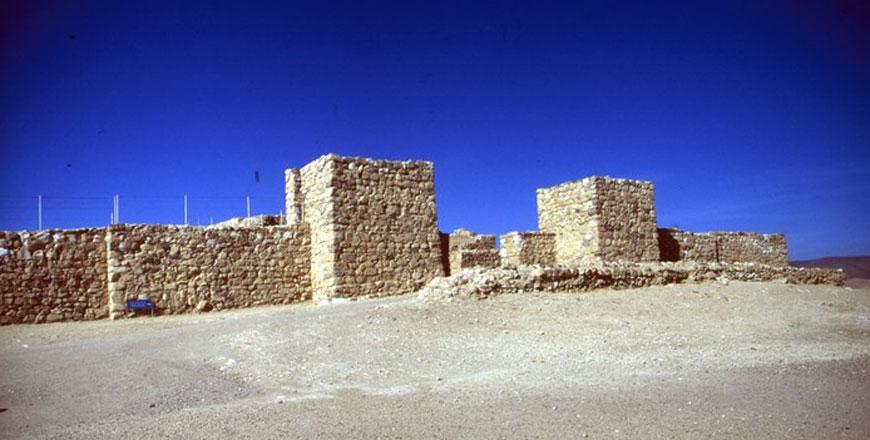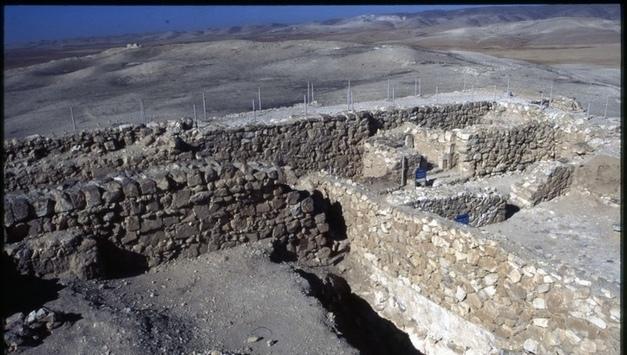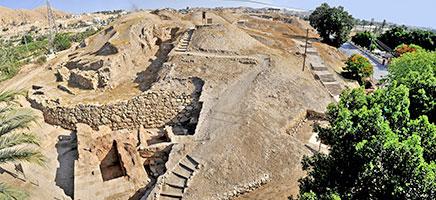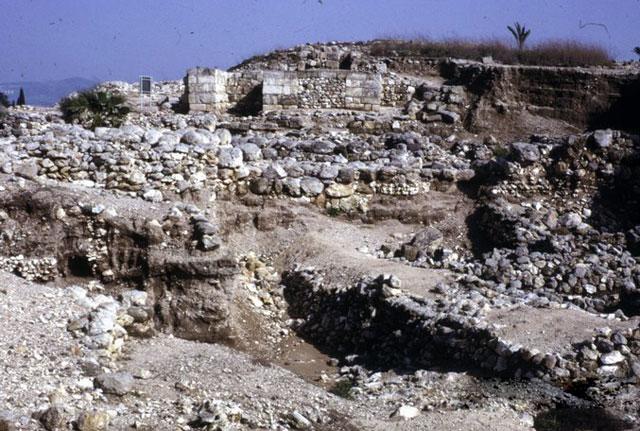You are here
When history is unwritten: importance of burial sites in shaping contemporary knowledge
By Saeb Rawashdeh - Jul 29,2024 - Last updated at Jul 29,2024

Stratum X gate of Arad fortress (Photo courtesy of ACOR)
AMMAN — Ancient burial sites provide an abundance of information that are normally lacking due to lost written sources, if there were any. They are the major source of information for the Early Bronze Age (EB), and several scores of tombs, isolated or grouped in cemeteries have been excavated near settlements.
In the Mediterranean zone, they consist of artificial caves accessed through a lateral shaft and many of them are used for the collective burials, presumably to an extended family or clan, thus hundreds of skeletons can be found there.
In the semi-arid peripheries, secondary burials in tombs built above ground prevailed and they belong to several distinct traditions, according to the French scholar Pierre de Miroschedji.
"Dolmen burials exist in the Golan and its western periphery, on the Jordanian Plateau, and in the Jordan Valley. In some areas of the Negev and in southern Sinai are found built tombs in the shape of a circular [Sinai] or a square room [Negev]; These nawamis and their variants are part of a funerary tradition typical of the southern deserts that can be traced to Oman through the Arabian Peninsula from the EB I onward," said de Miroschedji, from Universite Paris Nanterre.
Also, indirect evidence attesting to the importance of funerary rituals is provided by the appearance during the EB I of cultic vessels, sometimes found in tombs, and the same vessels might have been used in public rituals, the scholar said, adding that there is evidence of temples within a settlement at Hartuv, and especially at Tell Mutesellim.
"Presumably these temples were dedicated to a fertility goddess as in the Chalcolithic and the EB II–III periods," De Miroschedji said.
A synchronism between the final EB IB and Narmer, around 3,100 BC, suggests that the EB I–II transition took place during the 31st century BC at the latest.
"Although stratigraphically gradual, it was culturally striking, marked by the appearance of fortified cities —a radically new factor which entailed deep social changes, immediately perceptible in the organisation of the settlements and in the nature of the material culture, said De Miroschedji, adding that further synchronisms, albeit imprecise, imply that the EB II lasted for more than two centuries, until circa 2,900/2, 850 BC.
Furthermore, the transition from EB II to EB III is indicated by clear changes in the material culture in the south and by the appearance of Khirbet Kerak Ware in the north. There are indications of local disturbances leading to the abandonment of several important sites in some areas (the Huleh Basin, the Jordan Valley, the central coastal plain, and the northern Negev), but elsewhere there are strong signs of an expansion of settlements, especially in the southern coastal plain, reoccupied after several centuries of virtual abandonment, De Miroschedji underlined.
The EB III essentially paralleled the Egyptian Old Kingdom, until around 2,500/2,400 BC is the zenith of the Early Bronze civilisation in the southern Levant, when sites reached their maximum extension and monumental architecture developed, the scholar emphasised.
Regarding urban development, De Miroschedji said that the EB II witnessed a sudden acceleration of the urbanisation process marked by the abandonment of numerous EB I villages whose inhabitants moved to some settlements, which were rapidly transformed into urban fortified sites.
"As a result, a hierarchy emerged between large fortified sites, which could be regional centres; medium-sized or small fortified settlements, some of which may have been dependent on the former; villages of various sizes; permanent or semi-permanent hamlets; and camps," the professor stressed, adding that there was considerable regional variation in the density and nature of settlements: some areas (the northern part of the country and the Shephelah) were heavily populated and accommodated large urban settlements; whereas other areas, in particular the northern Negev, had only villages and a single fortified site in the EB II (Tel Arad, in the West Bank, opposite to Karak).
"From the distribution of isolated tombs and megalithic burials, it is clear that a sizeable segment of the population was mobile," De Miroschedji concluded.
Related Articles
AMMAN — The Bronze Age was a period of intensive contacts in the Levant, Egypt, Mesopotamia and southern Europe.
AMMAN — The transition in burial practice and rites during different phases of the Bronze Age intrigued researchers studying the ancient sit
AMMAN — In the Early Bronze Age, villages typically covered no more than 5 hectares.














